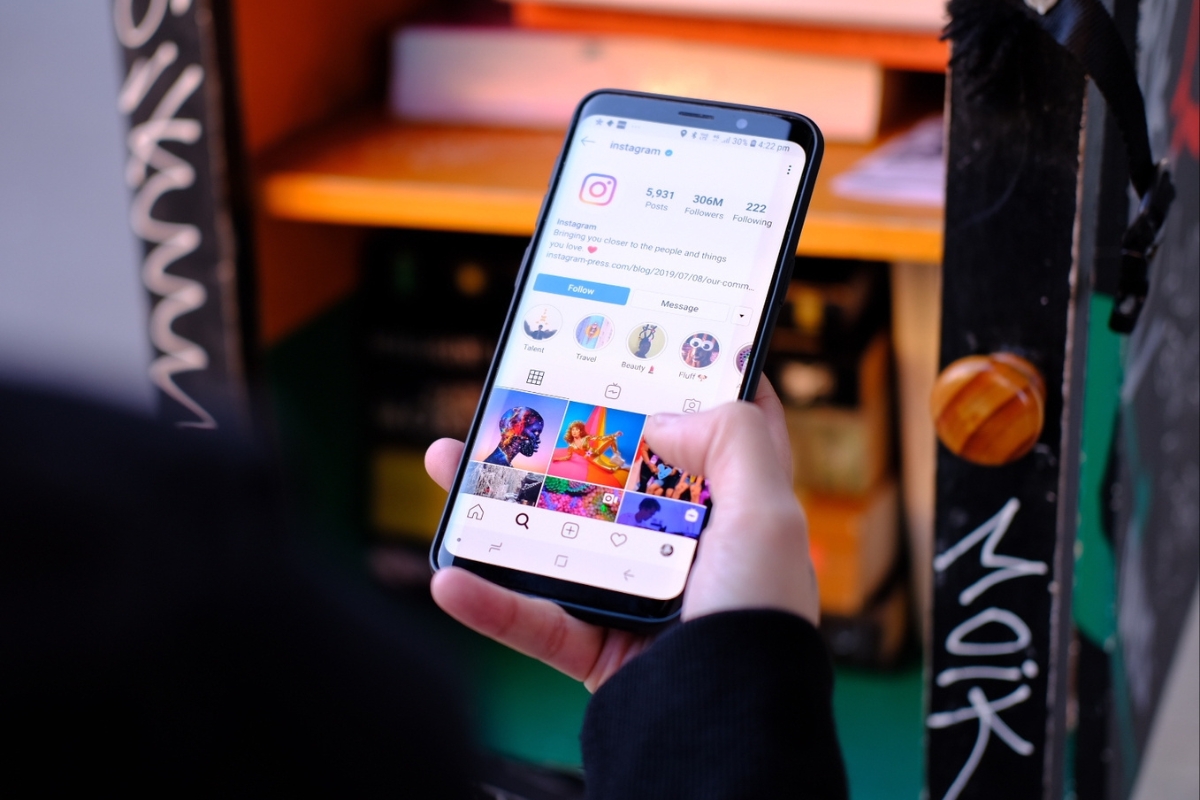In the competitive world of digital marketing, capturing the attention of potential customers is only half the battle. To truly maximize your marketing efforts and drive conversions, you need to stay top-of-mind with those who have already shown interest in your products or services.
This is where remarketing comes into play. What is remarketing? Remarketing is a powerful strategy that allows you to target and re-engage users who have previously visited your website or interacted with your brand, guiding them back through the sales funnel and ultimately increasing your return on investment (ROI).
In this guide, we’ll demystify the concept of remarketing, explaining how it works and why it is essential for boosting your marketing performance. From setting up effective remarketing campaigns to leveraging advanced targeting techniques, get ready to unlock the full potential of remarketing and see a significant uplift in your marketing ROI.
What is Remarketing and How Can It Skyrocket Your Sales?
Understanding Remarketing: A Closer Look at The Concept

Remarketing or retargeting strategies are digital marketing techniques that allow businesses to reconnect with potential customers who have previously shown interest in their products or services.
It involves placing targeted ads in front of users who have visited your website or engaged with your brand in some way. The goal of remarketing is to keep your brand top-of-mind and encourage these warm leads to take action, such as making a purchase or completing a desired conversion.
Remarketing works by utilizing cookies, which are small pieces of data stored on a user’s browser. When someone visits your website, a cookie is placed on their device, allowing you to track their online behavior and serve them relevant ads across various platforms and websites they visit.
This strategy is particularly effective because it targets users who have already expressed some level of interest in your offerings. By reminding them of what they were previously interested in, you increase the likelihood of conversion and ultimately boost your ROI.
The Mechanics Behind Remarketing

Remarketing is a powerful digital marketing strategy designed to re-engage users who have previously visited your website but did not complete a desired action, such as making a purchase or filling out a form. The mechanics behind these campaigns involve several key steps.
Firstly, a small piece of code, known as a pixel, is placed on your website. This pixel tracks visitors and collects data on their behavior and interactions. When users leave your site without converting, their information is stored, allowing you to target them with tailored ads later.
Next, segmentation is crucial. Users are categorized based on their behavior, such as pages visited, time spent on the site, or actions taken. This segmentation allows for the creation of highly targeted ads that address the specific interests and needs of each user group.
Ads are then designed to be compelling and relevant, often featuring dynamic content such as product recommendations or special offers that entice users to return and complete their purchase. These ads are displayed across various platforms, including social media, search engines, and display networks, ensuring they reach users wherever they spend their online time.
Performance tracking is essential for optimizing campaigns. Metrics like click-through rates (CTR), conversion rates, and return on ad spend (ROAS) are monitored to gauge effectiveness and make necessary adjustments.
By understanding and implementing these mechanics, businesses can effectively use remarketing to increase conversions, enhance customer engagement, and maximize marketing ROI.
Leveraging Remarketing Lists and Data for Targeted Remarketing Strategies

Data plays a crucial role in developing effective remarketing strategies. By analyzing user behavior and preferences, you can create highly targeted campaigns that resonate with your audience. Here are some key data points to consider:
- Website Activity: Analyze the pages users visit, the products they view, and the actions they take on your website. This data helps you understand their interests and tailor your ads accordingly.
- Customer Segmentation: Divide your audience into different segments based on demographics, interests, or past purchase history. This allows you to create personalized ads that speak directly to each segment’s needs and preferences.
- Engagement Metrics: Monitor metrics such as click-through rates (CTR), bounce rates, and time spent on site to gauge user engagement with your ads. Use this data to optimize your campaigns for better performance.
- Conversion Tracking: Implement conversion tracking codes on your website to measure the effectiveness of your remarketing efforts. This enables you to attribute conversions back to specific ad campaigns and optimize accordingly.
Crafting Compelling Ads That Convert

Crafting compelling remarketing ads that convert requires a blend of creativity, personalization, and strategic thinking. The goal is to re-engage potential customers who have previously interacted with your brand but haven’t yet completed a desired action.
Begin by understanding your audience segments and tailoring your ad content to address their specific interests and behaviors. Use dynamic ads to show personalized content, such as products they viewed or abandoned in their shopping cart. This relevancy increases the likelihood of recapturing their interest.
Your ad copy should be concise and persuasive, highlighting key benefits and unique selling points. Incorporate strong calls-to-action (CTAs) that guide users towards completing the desired action, such as “Buy Now,” “Sign Up,” or “Learn More.”
Visual elements are crucial. Use high-quality images or videos that capture attention and convey your message effectively. Consistent branding across all ads helps build recognition and trust.
Offering incentives can be a powerful motivator. Consider including special discounts, limited-time offers, or free shipping to entice users to return and complete their purchase.
A/B testing is essential for optimizing your ads. Test different headlines, images, CTAs, and ad formats to identify what resonates best with your audience. Use the data from these tests to refine your ads continuously.
Exploring Google Remarketing and Other Different Platforms for Dynamic Remarketing Campaigns

Exploring various platforms for remarketing allows you to reach your audience across multiple touchpoints, enhancing the effectiveness of your strategy. Each platform offers unique features and benefits that can be leveraged to re-engage potential customers effectively.
- Google Ads: Google Ads is one of the most popular platforms for remarketing lists. It allows you to display ads across the vast Google Display Network, which includes millions of websites, apps, and videos. Google remarketing and ads also support smarter dynamic remarketing, where ads are automatically customized with products or services viewed by users on your site, increasing relevancy and conversion rates.
- Facebook and Instagram: Facebook and Instagram provide robust remarketing options through their extensive user base and sophisticated targeting capabilities. You can create highly personalized ads based on user behavior and interests. Both platforms support dynamic ads that showcase products users have shown interest in, and they offer a variety of ad formats, including carousel ads, video ads, and stories.
- LinkedIn: For B2B businesses, LinkedIn is an ideal platform for remarketing. You can target professionals based on job titles, industries, and other professional criteria. LinkedIn’s Matched Audiences feature allows you to re-engage website visitors, email contacts, and account-based marketing (ABM) targets with tailored content.
- YouTube: YouTube offers powerful remarketing opportunities through video ads. You can target users who have previously interacted with your channel or videos, presenting them with engaging video content that drives them back to your site.
- Twitter: Twitter’s remarketing capabilities let you re-engage users who have interacted with your tweets or visited your website. You can create tailored messages that resonate with users based on their interests and previous engagements.
By leveraging these diverse platforms, you can create a comprehensive remarketing strategy that maximizes your reach and effectiveness, ensuring you connect with potential customers wherever they spend their time online.
Remarketing Best Practices: Tips for Optimal Results

To achieve optimal results with remarketing, it’s essential to follow best practices that enhance the effectiveness and efficiency of your campaigns. Here are key tips to ensure your remarketing efforts deliver maximum returns.
- Segment Your Audience: Start by segmenting your audience based on their behaviors and interactions with your website. Create distinct groups such as past buyers, cart abandoners, and product viewers. Tailoring your ads to these specific segments ensures relevance and increases conversion rates.
- Personalize Your Ads: Personalization is crucial for remarketing success. Use dynamic ads that automatically display products or services users have shown interest in. Personalized ads resonate more with potential customers, making them more likely to return and convert.
- Optimize Ad Frequency: Avoid overwhelming your audience by carefully managing ad frequency. High ad frequency can lead to ad fatigue, causing users to ignore or even resent your ads. Set frequency caps to ensure your ads are seen enough to be effective but not so often that they become annoying.
- Use Compelling CTAs: Your ads should include strong, clear calls-to-action (CTAs) that guide users toward completing the desired action. Phrases like “Complete Your Purchase,” “Explore More,” or “Claim Your Discount” can effectively prompt users to act.
- Test and Iterate: A/B testing is essential for optimizing your remarketing strategy. Experiment with different ad elements such as headlines, images, and CTAs to determine what works best. Use the insights gained from these tests to continuously refine and improve your ads.
- Monitor Performance: Regularly track key metrics such as click-through rates (CTR), conversion rates, and return on ad spend (ROAS). Monitoring performance helps identify areas for improvement and ensures your campaigns remain effective.
By implementing these best practices, you can enhance your remarketing efforts, driving higher engagement, conversions, and overall success in your campaigns.
Measuring Success: Key Metrics for Campaigns

Measuring the success of your remarketing involves tracking key metrics that provide insights into their effectiveness and areas for improvement. Here are essential metrics to monitor:
- Click-Through Rate (CTR): CTR calculates the percentage of viewers who click on your ads after viewing them. A high CTR suggests that your ad content is engaging and relevant to your target audience. Monitoring CTR allows you to evaluate the effectiveness of your ads and make improvements for increased engagement.
- Conversion Rate: The conversion rate shows the percentage of users who complete the desired action, such as making a purchase or filling out a form, after clicking on your ad. This metric is crucial for evaluating the effectiveness of your remarketing efforts in driving actual business outcomes.
- Cost Per Acquisition (CPA): CPA measures the cost associated with acquiring a customer through your ads. Keeping track of CPA helps you determine the financial efficiency of your campaigns and adjust your budget allocation for optimal results.
- Return on Ad Spend (ROAS): ROAS measures the revenue earned for each dollar spent on your remarketing efforts. A high ROAS signifies a successful and profitable campaign, whereas a low ROAS suggests that optimization is needed to enhance profitability.
- Bounce Rate: The bounce rate indicates the percentage of users who click on your ad but leave the remarketing landing pages without further interaction. A high bounce rate may suggest that your landing page content is not aligned with user expectations, necessitating improvements for better engagement.
- Frequency: Frequency measures how often your ad is shown to the same user. Monitoring this metric helps prevent ad fatigue by ensuring that your audience isn’t overwhelmed by repetitive ads, maintaining their interest and responsiveness.
By closely monitoring these key metrics, you can gain valuable insights into your digital remarketing campaign performance, make informed adjustments, and ultimately enhance your overall marketing strategy.
Overcoming Challenges in Remarketing Implementation

Implementing a successful remarketing strategy comes with its own set of challenges. Understanding and addressing these hurdles is crucial for optimizing your campaigns and achieving desired results.
- Ad Fatigue: One of the most common issues is ad fatigue, where users become tired of seeing the same ads repeatedly. To overcome this, regularly refresh your ad creatives. Rotate different visuals, messages, and offers to keep your audience engaged and interested.
- Privacy Concerns: With increasing emphasis on user privacy, complying with regulations like GDPR and CCPA is essential. Ensure your remarketing practices are transparent and ethical. Provide clear opt-out options and respect user preferences regarding data collection and ad targeting.
- Budget Management: Allocating budget effectively can be challenging. Start with a well-defined budget and adjust based on performance data. Focus spending on segments showing higher engagement and conversion rates, while scaling back on less effective areas.
- Ad Relevance: Ensuring ad relevance is critical. Use advanced segmentation to tailor your ads closely to user behavior and preferences. Implement dynamic remarketing campaigns to show personalized product recommendations based on users’ previous interactions with your site.
- Tracking and Attribution: Accurate tracking and attribution can be complex, especially with multi-channel campaigns. Utilize robust analytics tools to track user journeys and attribute conversions correctly. This data will help you understand the effectiveness of different touchpoints and refine your strategies.
- Technical Integration: Integrating remarketing tools with your existing systems can pose technical challenges. Work closely with your IT team or third-party vendors to ensure seamless integration. Regularly test and troubleshoot to maintain functionality and performance.
By proactively addressing these challenges, you can streamline your remarketing implementation, enhance campaign effectiveness, and drive better results in your digital marketing efforts.
Integrating Remarketing with Overall Marketing Strategy

Integrating remarketing into your overall marketing strategy can significantly amplify your campaign’s effectiveness and reach. Remarketing should not operate in isolation but rather complement and enhance your broader marketing efforts.
- Consistent Messaging: Ensure that your ads align with your overall brand messaging and campaign themes. Consistent messaging across all channels reinforces your brand identity and helps create a cohesive customer experience. Tailor your ads to echo the main marketing messages, reinforcing key points and offers.
- Cross-Channel Synergy: Leverage the strengths of different marketing channels by creating a cross-channel synergy. Use insights from your email marketing, social media, and content marketing efforts to inform your remarketing strategy. For example, if a user engages with a particular piece of content or email, your ads can build on that interaction with personalized follow-ups.
- Data Integration: Integrate data from various marketing channels to create a unified view of your customer journey. Utilize customer relationship management (CRM) systems to gather and analyze data across touchpoints, ensuring that your remarketing efforts are informed by comprehensive, real-time insights.
- Audience Segmentation: Use detailed audience segmentation based on behavior and engagement across all marketing channels. This allows you to create highly targeted remarketing campaigns that address specific user needs and preferences, improving relevance and conversion rates.
- Campaign Alignment: Align your campaigns with broader marketing initiatives and timelines. For instance, if you are launching a new product or running a seasonal promotion, ensure that your remarketing efforts are synchronized to maximize impact and visibility.
By seamlessly integrating remarketing with your overall marketing strategy, you can create a more cohesive, effective, and personalized customer journey, ultimately driving higher engagement and conversion rates across all channels.
Conclusion: Maximizing ROI Through Strategic Remarketing Audience Targeting
In today’s competitive digital landscape, remarketing has become an indispensable tool for businesses looking to unlock increased ROI and drive conversions. By reconnecting with potential customers who have already shown interest in your brand, you can stay top-of-mind and guide them towards making a purchase or completing a desired action.
To implement effective remarketing strategies tailored to your business needs, partner with Newman Web Solutions. Our team of experts is ready to help you achieve your digital marketing goals and boost your ROI. Contact us today at (404) 301-9189 or schedule a free 30-minute strategy session to discover how we can elevate your remarketing campaigns. Let Newman Web Solutions guide you to greater success through smart, targeted marketing.





